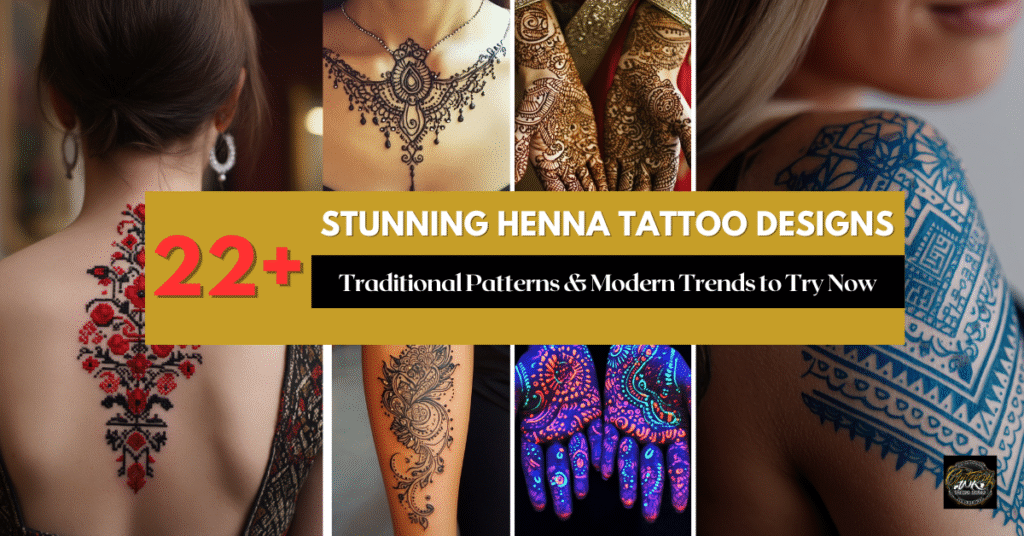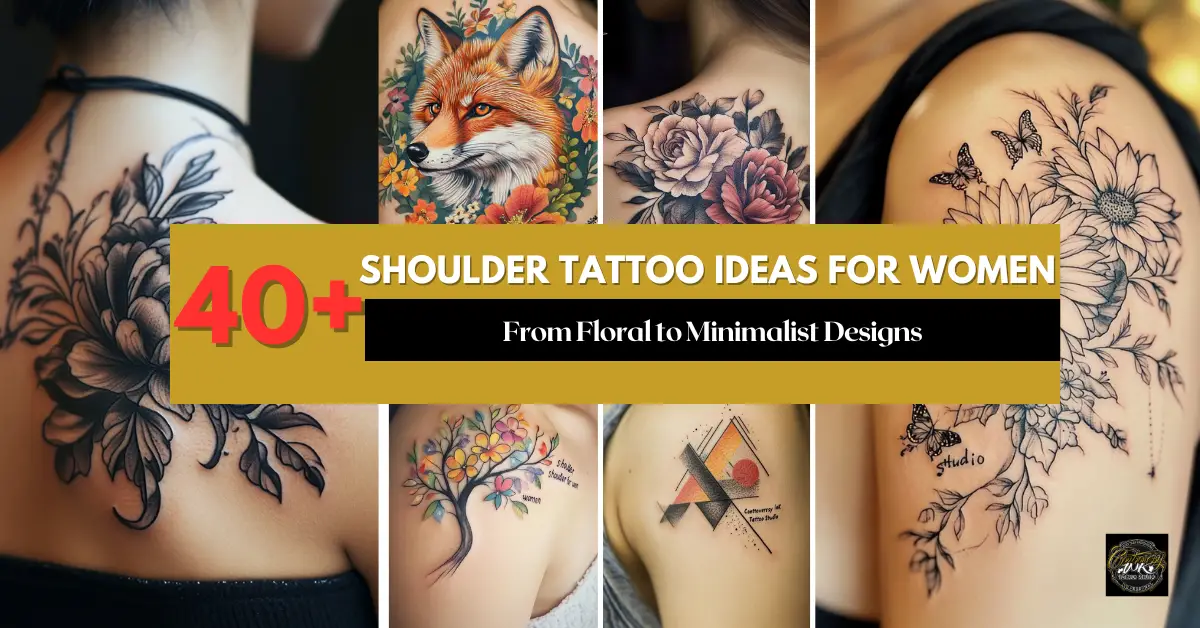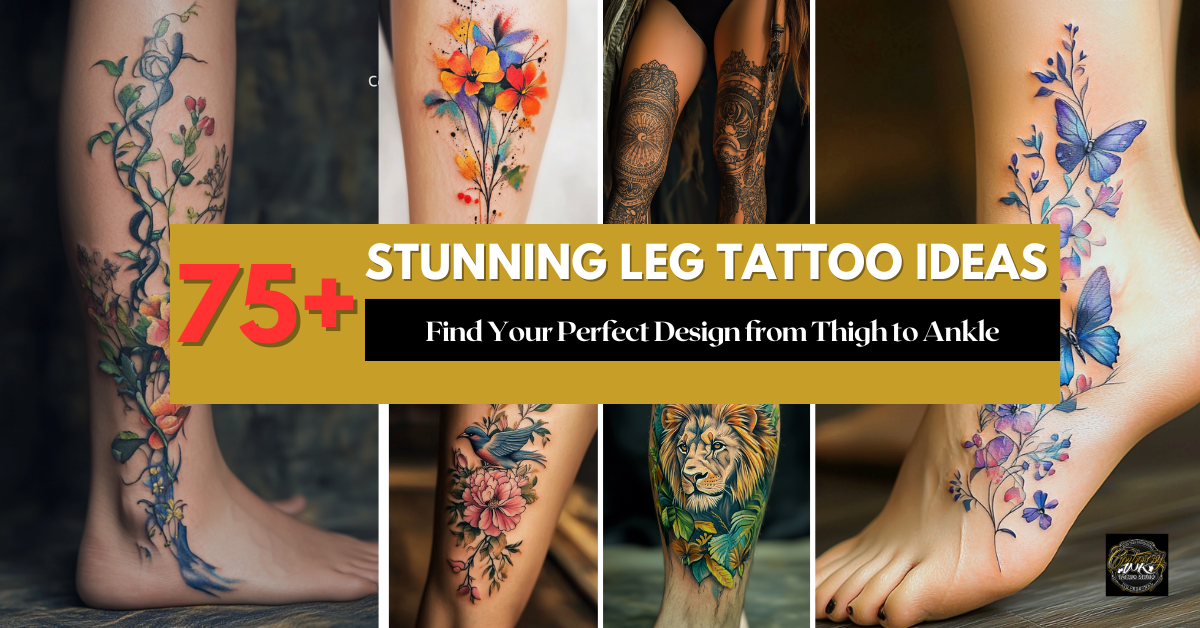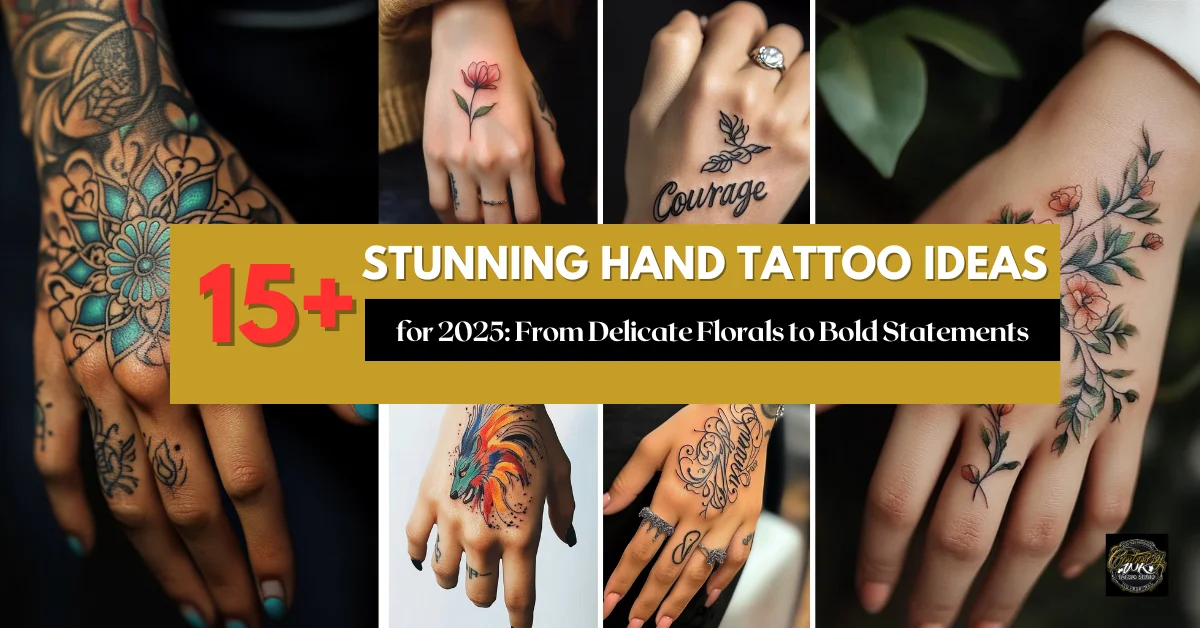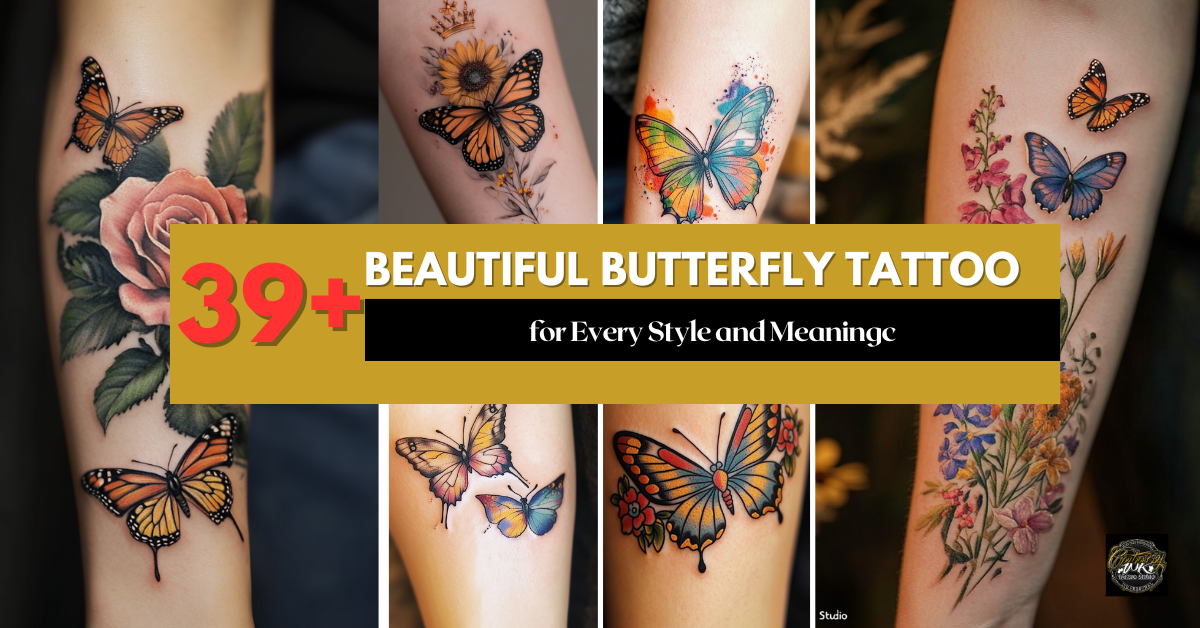If you buy through links on our site, we may earn a small affiliate commission to help support the blog - at no extra cost to you. It never influences our product selection process. Thank you!
Looking for a stunning way to adorn your body without the permanence of traditional tattoos? Henna tattoo designs offer the perfect blend of artistic expression and temporary commitment. These intricate, natural body art patterns have decorated hands, feet, and other body parts across cultures for centuries, particularly in Middle Eastern, North African, and South Asian traditions.
You’ll find henna designs range from delicate florals and paisley patterns to geometric shapes and symbolic motifs—each carrying its own significance and beauty. Whether you’re celebrating a special occasion, expressing your personal style, or simply experimenting with body art, henna provides a beautiful, chemical-free alternative that typically lasts 1-3 weeks. Discover the rich cultural heritage and endless creative possibilities that make henna tattoos a timeless art form worth exploring.
The Ancient Art of Henna Tattoos: A Cultural Heritage

Henna tattoos represent one of humanity’s oldest forms of body art, dating back over 5,000 years. This natural temporary dye has transcended generations, carrying deep cultural significance across various regions worldwide. Understanding the rich heritage behind henna tattoos adds meaningful context to the beautiful designs you might choose for your next temporary body art.
Origins in Ancient Civilizations
Henna application began in ancient Egypt where it was used for mummification and to dye the hair and nails of pharaohs. Archaeological evidence shows henna was cultivated in the Nile river valley as early as 2700 BCE. Egyptian nobility used henna to color their palms and soles, believing it brought good fortune and health.
Mehndi Traditions in South Asia
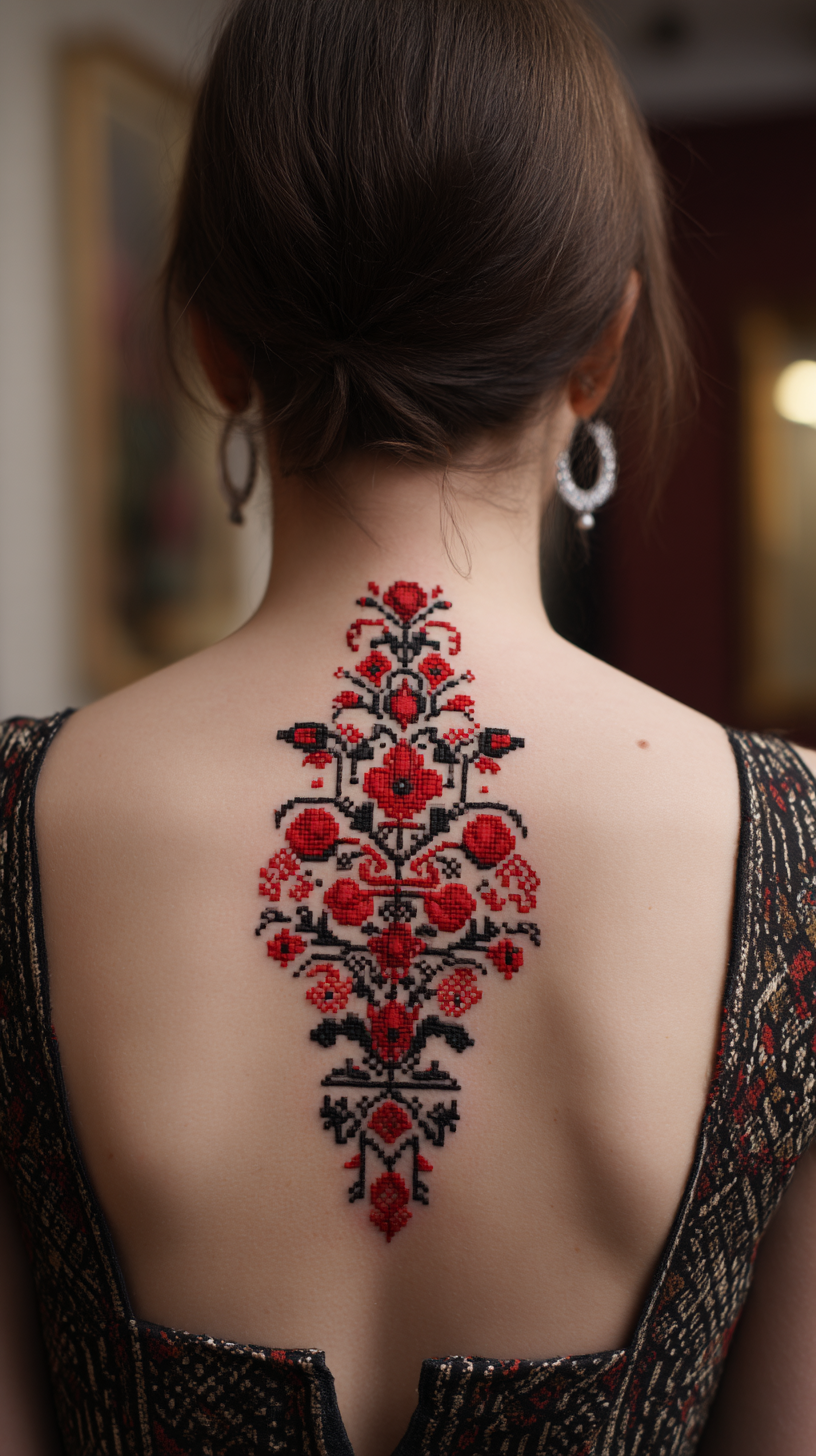
In India, Pakistan, and Bangladesh, henna (known as mehndi) has been integral to wedding traditions for centuries. Brides undergo elaborate henna ceremonies where intricate designs cover their hands and feet. These patterns traditionally contain symbols for:
- Fertility and abundance
- Protection against evil
- Strengthening of the marital bond
- Blessing of the upcoming union
Each region in South Asia has developed distinct mehndi styles, from the fine, detailed work of Rajasthan to the bold, geometric patterns of Gujarat.
Middle Eastern and North African Practices
Henna traditions in Morocco, Tunisia, and Egypt feature geometric patterns that reflect Islamic art influences. In these regions, henna ceremonies mark important life transitions including:
- Coming of age celebrations
- Pre-wedding festivities
- Post-childbirth celebrations
- Religious holidays like Eid
The Berber communities of North Africa have particularly distinctive henna designs featuring angular, tribal-inspired motifs that tell stories of family heritage and protection.
Symbolic Meanings Behind Henna Designs
Henna designs aren’t merely decorative—they carry profound cultural symbolism:
| Symbol | Meaning |
|---|---|
| Peacock | Beauty and pride |
| Lotus | Purity and spiritual awakening |
| Vines and leaves | Growth and vitality |
| Mandala | Universe and cosmic harmony |
| Eyes | Protection from evil |
| Butterflies | Transformation and rebirth |
Modern Revival and Global Appreciation
Today’s henna tattoo renaissance bridges traditional practices with contemporary aesthetics. The art form has gained popularity beyond its original cultural contexts, with many appreciating both its beauty and cultural significance. Modern henna artists often blend traditional motifs with new influences, creating fusion styles that respect historical roots while embracing artistic innovation.
Natural Ingredients and Preparation
Traditional henna paste comes from the Lawsonia inermis plant. The preparation process involves:
- Harvesting and drying the leaves
- Grinding them into a fine powder
- Mixing with lemon juice, essential oils, and sometimes sugar or tea
- Letting the mixture rest for 24-48 hours to release its dye
This natural approach contrasts with “black henna,” which contains harmful chemicals like PPD (para-phenylenediamine) and should be avoided for safety reasons.
Stunning Traditional Henna Tattoo Designs
Explore these timeless henna designs that showcase the rich cultural heritage behind this ancient art form. Each pattern represents centuries of tradition while offering unique aesthetic appeal for your temporary body art.
Intricate Indian Bridal Mehndi Patterns
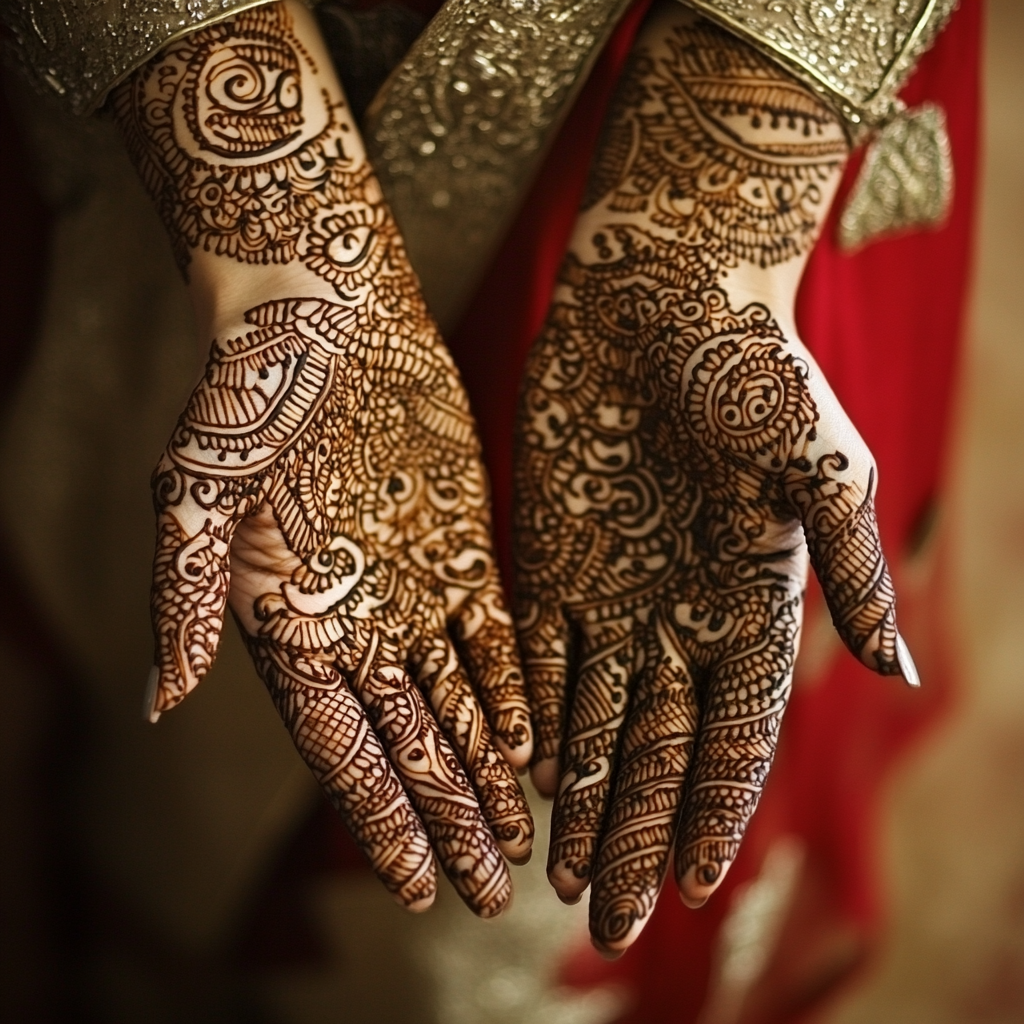
Indian bridal henna designs feature elaborate patterns that extend from fingertips to elbows and feet to knees. These intricate designs typically include delicate peacock motifs, paisley patterns, and mandala-inspired circles symbolizing happiness and fertility. Traditional Indian mehndi incorporates fine lines, dots, and crescent shapes arranged in symmetrical patterns, often hiding the groom’s name within the complex design as a wedding night treasure hunt. Apply these designs for special occasions or when you want a statement piece that showcases the pinnacle of henna artistry.
Moroccan-Inspired Geometric Designs

Moroccan henna designs emphasize bold geometric patterns and angular shapes that create striking visual impact. These designs feature interlocking diamonds, triangles, and hexagonal patterns arranged in bands around wrists, ankles, or as statement pieces on the back of hands. Traditional Moroccan styles often incorporate distinctive line work with negative space techniques that make the pattern pop against your skin. Choose these designs when you want a sophisticated, architectural approach to henna that draws from North African cultural traditions.
Arabic Floral and Vine Motifs
Arabic henna designs showcase flowing floral patterns with graceful vines that wrap elegantly around fingers, wrists, and feet. These airy, less dense designs feature large flower blooms connected by delicate stems and leaves, creating negative space that makes the pattern appear lacy and refined. Traditional Arabic styles emphasize asymmetrical composition focused on one side of the hand or foot, allowing for quicker application while maintaining visual impact. Select these designs for a lighter, more contemporary look that still honors traditional Middle Eastern henna aesthetics.
Modern Henna Tattoo Trends
While traditional henna designs carry deep cultural significance, contemporary artists are pushing boundaries with innovative approaches that appeal to modern sensibilities. These emerging trends blend timeless techniques with fresh aesthetics for a distinctly current look.
Minimalist Henna Designs

Minimalist henna designs have surged in popularity as more people embrace the “less is more” philosophy. These streamlined patterns feature clean lines, subtle spacing, and simplified motifs that create elegant statements without overwhelming the skin. You’ll find delicate finger trails, single-line wrist bracelets, and sparse dotwork patterns that complement any outfit or occasion. Minimalist designs typically use negative space strategically, allowing small elements to stand out dramatically against bare skin. Many artists now specialize in creating these refined patterns that offer a sophisticated alternative to elaborate traditional designs, making them perfect for professionals seeking subtle body art that transitions seamlessly from work to social settings.
Fusion Styles Blending Cultural Elements

Fusion henna designs creatively merge elements from different cultural traditions to create unique, personalized body art. You’ll see stunning combinations like Moroccan geometric patterns interwoven with delicate Indian paisleys or Arabic flowing lines mixed with contemporary Western symbols. These cross-cultural designs reflect our increasingly connected industry and allow for personal expression that honors multiple heritages simultaneously. Artists specializing in fusion styles often incorporate meaningful symbols from their clients’ backgrounds—like combining Celtic knots with Middle Eastern mandalas for someone with mixed ancestry. The resulting designs tell rich visual stories that transcend geographic boundaries while still respecting the traditional foundations of henna art.
Contemporary Abstract Patterns
Abstract henna designs break free from traditional constraints with fluid, non-representational patterns that emphasize creative expression. You’ll discover bold geometric shapes, asymmetrical layouts, and unexpected negative space that creates striking visual impact. These modern interpretations often feature ever-changing movement through swirling lines, fractals, and organic shapes that flow naturally with body contours. Abstract designs frequently incorporate contemporary influences like watercolor effects, industrial elements, and digital-inspired patterns that appeal to younger henna enthusiasts. Artists creating these avant-garde designs push the boundaries of traditional henna application techniques, sometimes using innovative tools alongside the classic cone applicator to achieve uniquely textured effects that stand out from conventional designs.
Glitter and Metallic Enhancements

Glitter-enhanced henna designs add contemporary sparkle to traditional patterns, creating eye-catching body art that catches the light. You’ll find artists applying fine metallic powders, cosmetic-grade glitters, or metallic adhesive accents atop dried henna designs to create dimensional effects that transform in different lighting. These embellishments work particularly well for special occasions like festivals, photoshoots, and celebrations where added drama is desired. The contrast between earthy henna paste and reflective metallics creates a fascinating juxtaposition of natural and glamorous elements that appeals to modern aesthetic sensibilities while still honoring traditional application techniques.
Henna-Inspired Tattoos
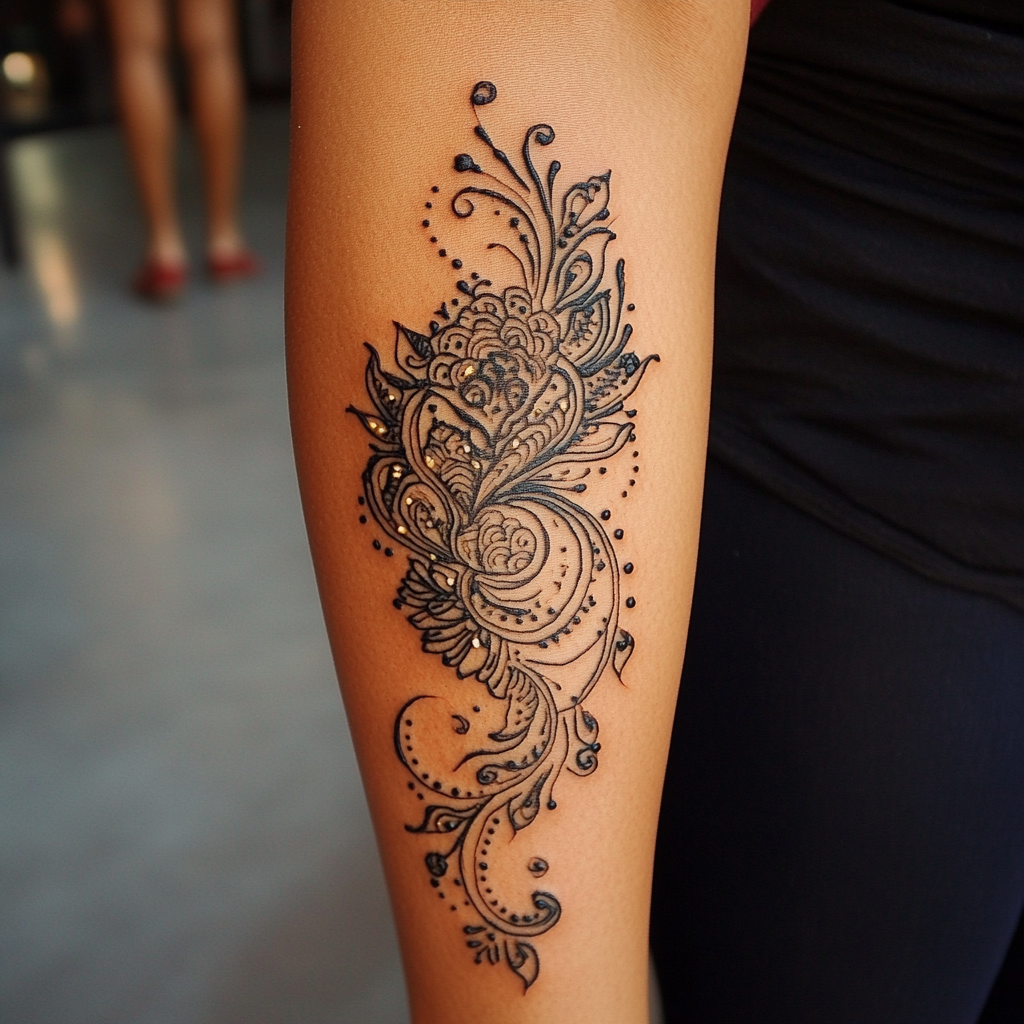
Permanent and semi-permanent tattoos inspired by henna designs offer longevity that traditional henna paste cannot provide. You’ll see fine-line tattoo artists creating delicate patterns reminiscent of traditional mehndi but executed with tattoo needles rather than plant paste. These designs often maintain the intricate detailing and symbolic elements of traditional henna while adding contemporary elements like watercolor techniques, dotwork shading, or geometric precision. Many clients choose these tattoos to commemorate important life events or to carry meaningful cultural symbols permanently, creating a bridge between ancient traditions and modern body modification practices.
Neon and UV-Reactive Henna
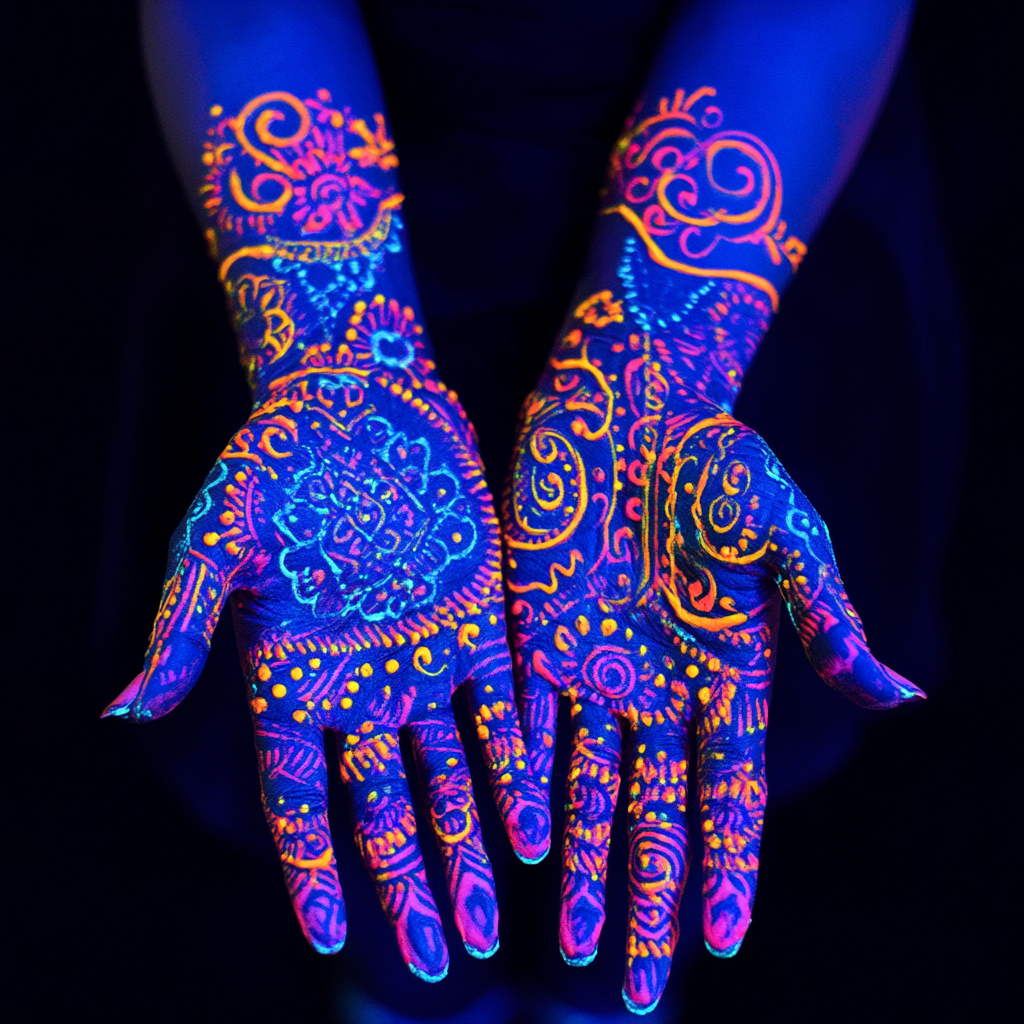
Neon and UV-reactive henna designs bring traditional body art into contemporary nightlife settings with vibrant, glowing results. You’ll discover special UV-reactive henna pastes and additives that appear subtle in daylight but transform dramatically under black lights at clubs, festivals, and parties. These designs typically feature bold patterns with strategic spacing to maximize the glowing effect when illuminated. Artists creating these innovative designs often recommend strategic placement on areas most likely to be visible in nightlife settings, such as hands, wrists, and upper arms. The contrast between ancient henna traditions and modern lighting technology creates a fascinating temporal bridge between historical practices and current entertainment cultures.
Bracelet and Jewelry-Inspired Patterns
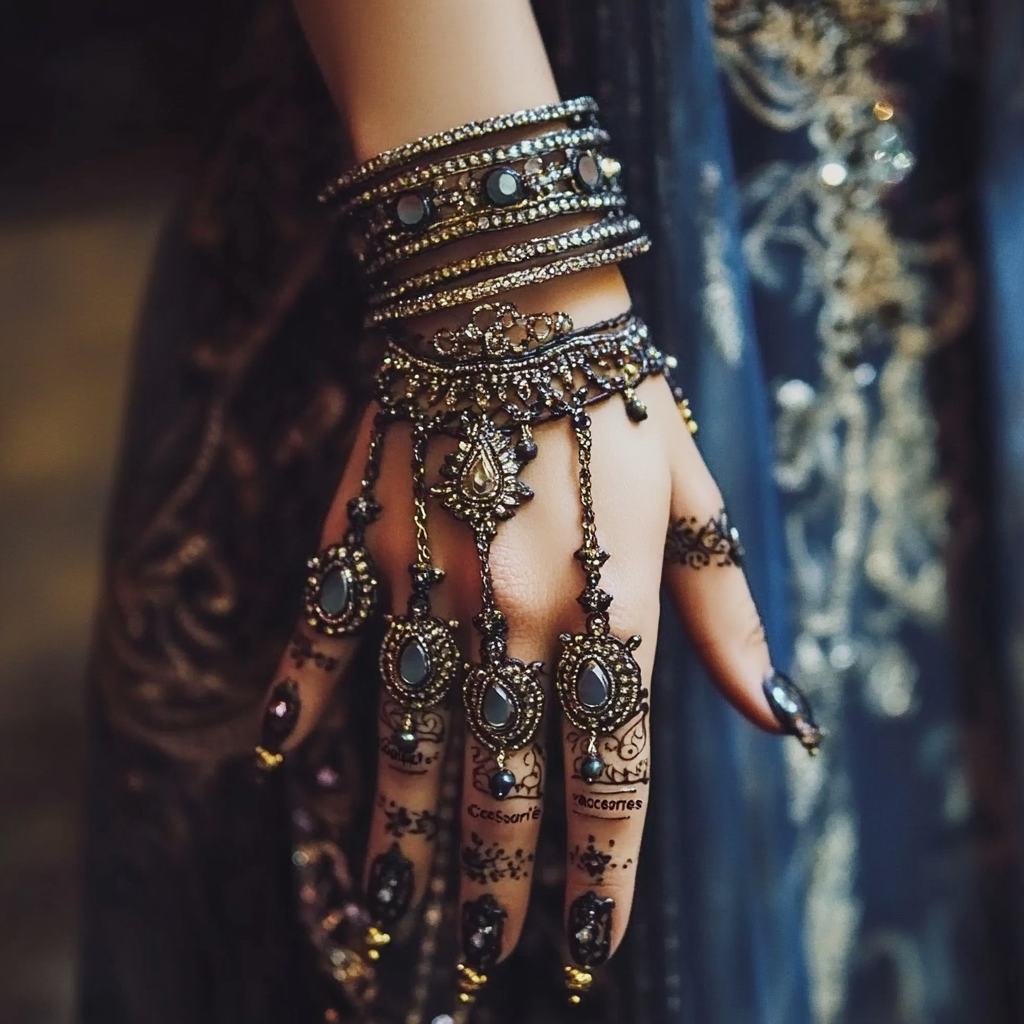
Jewelry-inspired henna designs replicate the appearance of fine accessories directly on your skin, creating the illusion of intricate bangles, cuffs, and rings. You’ll find delicate chain patterns encircling wrists, stacked bracelet designs climbing up forearms, and elaborate finger patterns that mimic the appearance of statement rings. These designs often incorporate small gemstone-like motifs, connector chains, and clasp elements that enhance the jewelry illusion. Artists specializing in these patterns frequently draw inspiration from fine jewelry design, translating metal and gemstone textures into henna paste with remarkable precision. These temporary “accessories” offer a budget-friendly alternative to expensive jewelry while allowing for creative expression that changes with each application.
Popular Henna Tattoo Placements
Hand and Wrist Designs

Hand and wrist henna designs remain the most requested placement for good reason. Your hands serve as the perfect canvas for intricate patterns that can be easily displayed without commitment to permanent ink. Traditional Indian bridal mehndi typically covers both palms with elaborate mandalas, paisley patterns, and fine line work extending up to the wrists and sometimes midway to the elbows. For everyday wear, consider delicate finger trails that wind between knuckles or minimalist wrist bands that resemble dainty bracelets. These placements are ideal for first-timers since they’re highly visible and allow you to enjoy your temporary art throughout the day.
Foot and Ankle Patterns
Foot and ankle henna designs offer a beautiful way to adorn your lower extremities, especially during sandal season. These placements typically feature asymmetrical designs that start at the toes, flow across the top of the foot, and wrap around the ankle like natural jewelry. Moroccan-inspired geometric patterns work particularly well for this area, creating striking contrast against skin. Many brides choose elaborate foot henna that mirrors their hand designs, while more casual wearers might opt for simpler ankle bands or toe accents. The skin on feet tends to hold henna pigment longer than other body parts, sometimes lasting up to three weeks with proper care.
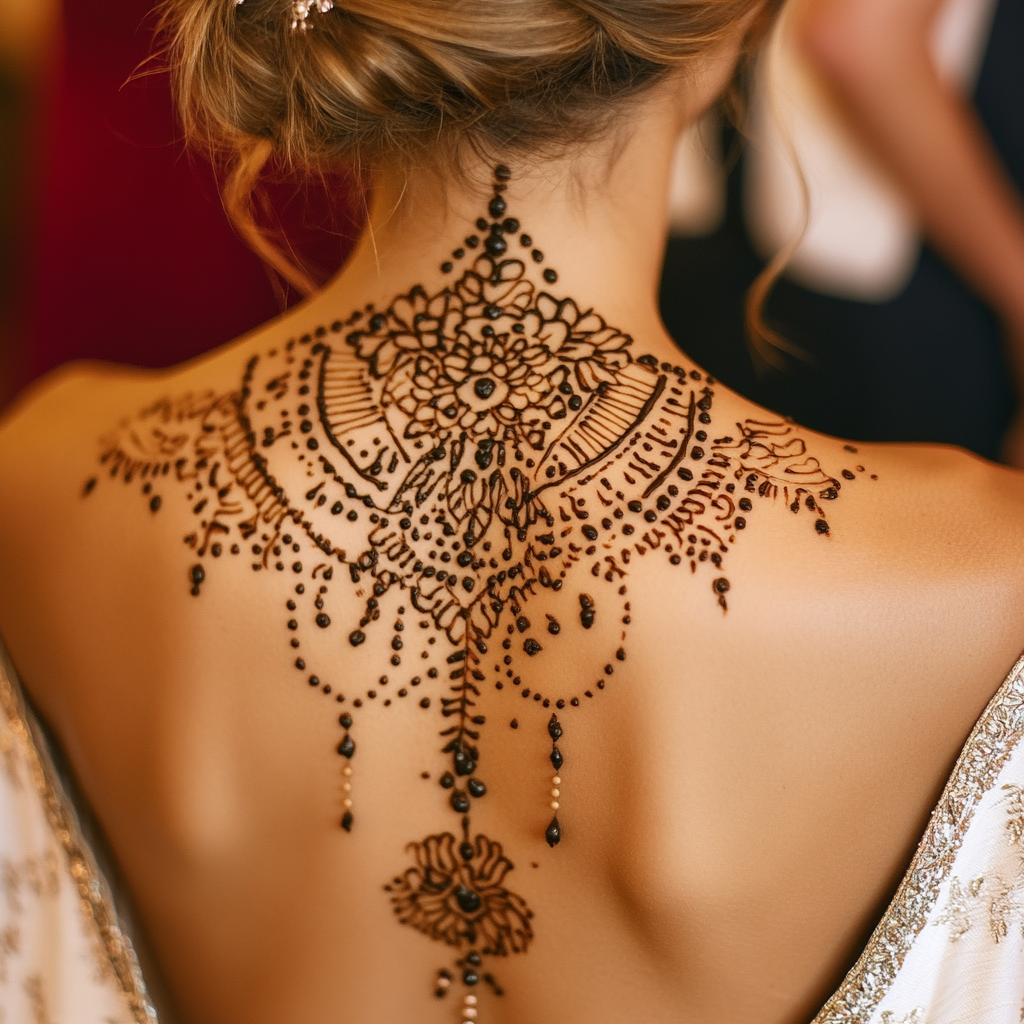
Shoulder and back henna creates dramatic impact for special occasions or summer outfits that reveal these areas. Your shoulder blades provide ample space for larger, more intricate designs like mandalas, dreamcatchers, or flowing Arabic-style patterns. The gentle curve of shoulders allows artists to create beautiful symmetrical or asymmetrical pieces that complement your natural body lines. Many people choose shoulder henna that extends partially down the upper arm or across the upper back, creating a temporary tattoo that resembles delicate lace. These placements are perfect for photography sessions or events where you’ll be wearing outfits that showcase your shoulders and upper back.
Arm and Forearm Statements

Arm and forearm henna offers versatility for both subtle and bold statements. Full sleeve designs inspired by traditional mehndi create dramatic impact, while smaller forearm accents provide more understated elegance. The relatively flat surface of your inner forearm makes it ideal for detailed motifs like lotus flowers, hamsa hands, or personalized symbols. Many people choose armband designs that encircle the bicep or forearm, creating the appearance of permanent ornamental tattoos. This placement works wonderfully for festival season or summer events, allowing you to showcase your temporary body art without the lifetime commitment of traditional tattoos.
Chest and Sternum Elegance
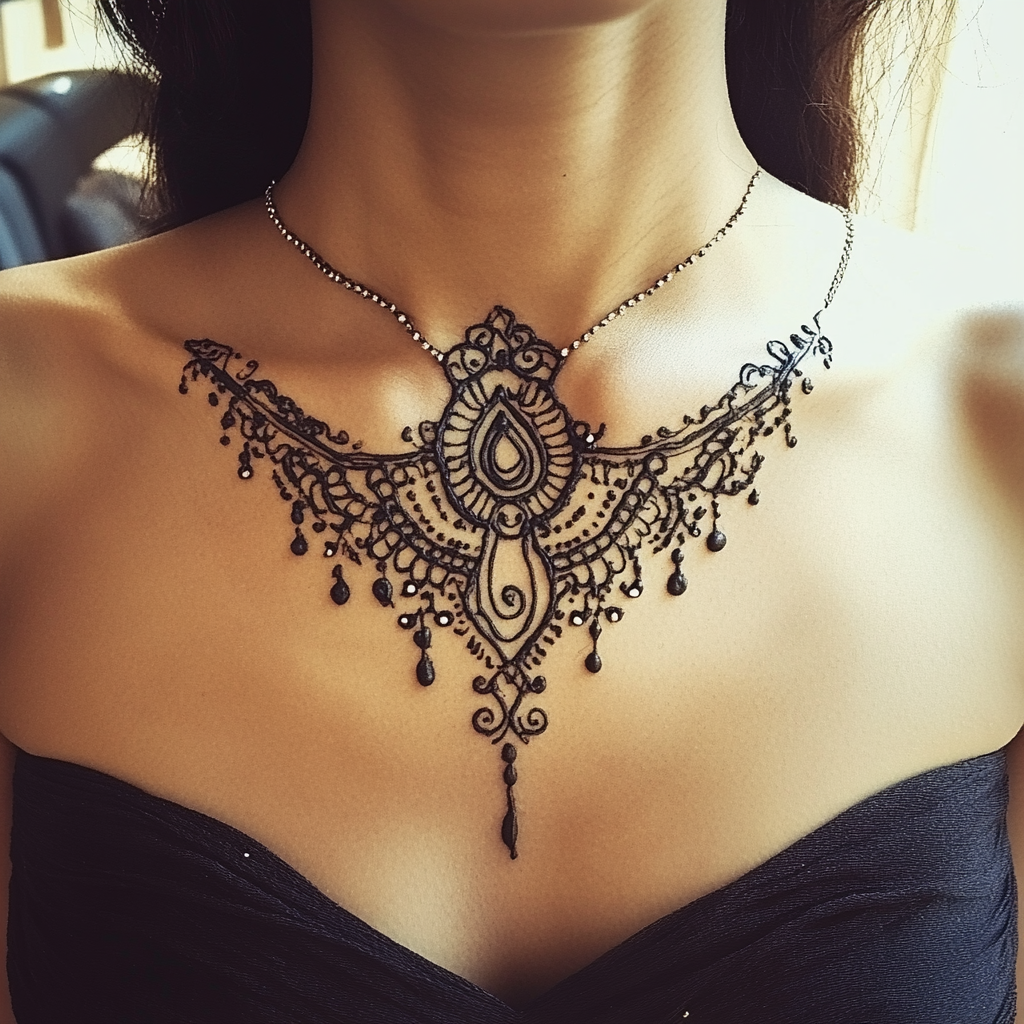
Chest and sternum henna designs have gained popularity as statement pieces for special occasions and beach outings. These striking placements create an elegant focal point, often resembling delicate necklaces or chest pieces. Traditional designs typically feature symmetrical patterns centered between the collarbones, sometimes extending down toward the sternum. Modern interpretations include minimalist line work, geometric shapes, or small mandala accents. Since this area isn’t exposed to frequent washing or friction, chest henna tends to maintain vibrant color throughout its lifespan. This placement works beautifully with low-cut or open necklines, creating a temporary body adornment that enhances your natural features.
DIY Henna: Tips for Creating Your Own Designs
Essential Supplies for Home Application
Creating your own henna tattoos at home requires gathering the right supplies before you begin. Start with high-quality henna powder from reputable sources to ensure the best color and safety for your skin. Mix your henna paste with lemon juice, sugar, and essential oils like tea tree or lavender for optimal consistency and longevity. You’ll need application tools such as plastic cones, squeeze bottles, or even piping bags for precise line work. Keep cotton balls, paper towels, and a small bowl of lemon sugar solution nearby for quick fixes and smudge control. Invest in medical tape or breathable bandages to protect freshly applied designs while they dry. Don’t forget to have olive or coconut oil on hand for sealing your design after the paste has dried completely. Having all these supplies ready before you start will make your DIY henna experience much more enjoyable and successful.
Beginner-Friendly Pattern Templates
Starting with simple designs is the key to mastering DIY henna application. Practice basic elements like dots, lines, and teardrops to build your confidence and technique. Try small flower patterns with simple petals surrounded by dot accents for an elegant yet achievable design. Crescent moons paired with stars create beautiful cosmic-inspired tattoos that don’t require advanced skills. Infinity symbols enhanced with small decorative elements offer meaningful yet straightforward designs for beginners. Experiment with basic bracelet patterns that wrap around your wrist using alternating dots and dashes. Simple vine patterns running along fingers or up the arm provide an attractive foundation you can build upon as your skills improve. Download printable templates from reputable henna artists online to trace directly onto your skin with a pen before applying paste. Remember that consistent practice will steadily improve your line quality and confidence with more complex designs.
Conclusion: Embracing the Temporary Beauty of Henna Art
Henna tattoos offer a beautiful bridge between ancient traditions and modern expression. Whether you’re drawn to elaborate bridal designs or minimalist contemporary patterns they provide a meaningful yet temporary way to adorn your body.
As you explore the rich industry of henna you’ll discover not just an art form but a cultural journey that spans continents and centuries. From proper application techniques to aftercare practices you now have the knowledge to create stunning designs that honor this time-honored tradition.
Remember that the true beauty of henna lies in its impermanence – a reminder to appreciate each moment and celebrate the artistry that connects us across time and cultures. Let your skin become a canvas for these beautiful stories even if just for a little while.
Frequently Asked Questions
What is the cultural significance of henna tattoos?
Henna tattoos hold deep cultural significance in regions like the Middle East, North Africa, and South Asia, where they’ve been used for centuries. In ancient Egypt, henna symbolized good fortune among nobility. In South Asian traditions, mehndi represents fertility, protection, and marital strength during weddings. Middle Eastern and North African henna features geometric patterns that mark significant life events and reflect Islamic art influences.
How long do henna tattoos last?
Henna tattoos typically last between 1-3 weeks, depending on placement and aftercare. Designs on hands and feet tend to last longer due to thicker skin with more keratin. Regular moisturizing with natural oils can extend longevity, while excessive washing, swimming, and exfoliation will cause faster fading. The color usually peaks around 48 hours after application before gradually fading.
Is black henna safe to use?
No, black henna is not safe. It contains PPD (para-phenylenediamine), a chemical that can cause severe allergic reactions, blistering, and permanent scarring. Natural henna ranges from orange to reddish-brown colors only. If someone offers “black henna,” it contains harmful additives. Always ask about ingredients and choose traditional natural henna paste that smells earthy and plant-like.
Can I do henna tattoos at home?
Yes, you can create henna designs at home with proper supplies. You’ll need quality henna powder, essential oils (like tea tree or lavender), sugar, lemon juice, application tools (cones or bottles), and pattern templates. Begin with simple designs like dots, lines, and small florals. Practice on paper before applying to skin, and remember that technique improves with practice.
How should I care for my new henna tattoo?
Keep the paste on for 4-6 hours minimum (overnight is best). Avoid water for 12-24 hours after paste removal. Pat dry instead of rubbing when washing. Apply a lemon juice and sugar mixture to enhance color development. Moisturize with natural oils like olive or coconut oil daily. Avoid chlorine, salt water, exfoliants, and excessive sweating to prevent premature fading.
What designs are best for beginners?
Beginners should start with simple dot clusters, straight lines, basic flowers, and bracelet patterns around wrists or ankles. Small mandala elements, simple vines, and geometric shapes like triangles or diamonds are also manageable. Practice creating consistent lines and symmetrical patterns on paper first. Don’t attempt intricate bridal designs until you’ve mastered basic techniques.
Are there any religious or spiritual meanings behind henna designs?
Yes, many henna designs carry spiritual significance. Mandala patterns represent the universe and spiritual journey. The lotus flower symbolizes purity and spiritual awakening. Peacocks signify beauty and immortality in Hindu traditions. Geometric patterns in Islamic henna reflect order and unity. The Eye motif (Evil Eye) is believed to provide protection from negative energies across many cultures.
What’s the difference between traditional and modern henna styles?
Traditional henna follows cultural-specific patterns with established symbolism and regional techniques. Modern styles incorporate contemporary elements like minimalism, abstract designs, fusion of cultural patterns, and additions like glitter or metallic effects. Traditional designs are typically more intricate and cover larger areas, while modern styles may be smaller, more personalized, and placed in non-traditional locations.

